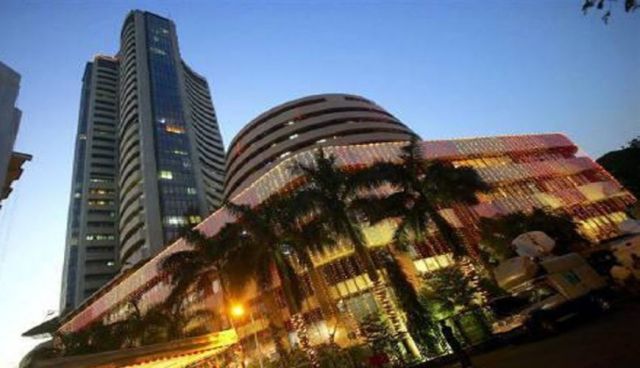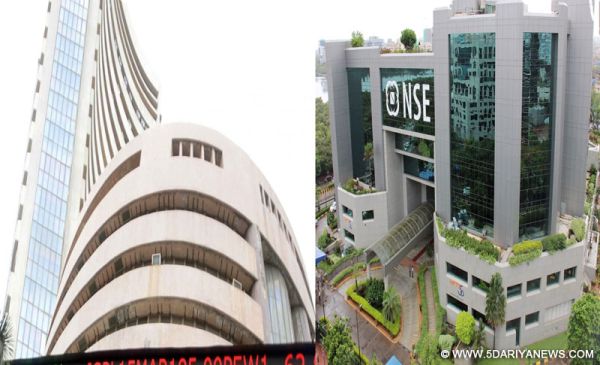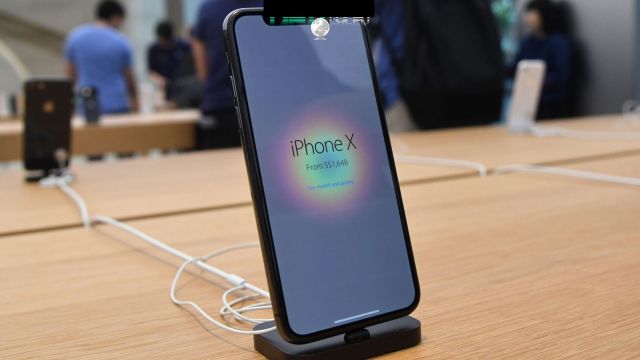
by admin | May 25, 2021 | Branding, Business, Interviews, Markets, Sales, SMEs, Technology
 By Vivek Singh Chauhan,
By Vivek Singh Chauhan,
New Delhi : With PC and laptop gaming gaining momentum in India, Taiwanese electronics major ASUS aims to garner 10 per cent market share next year with launching innovative products in the thin and light segment, a top company executive said on Saturday.
“In 2019, we are targeting that we should reach around 4 lakh units (laptops) with 10 per cent market share. You will see gaming and consumer laptops in the thin and light segment from us at an affordable price range next year,” Arnold Su, PC and Gaming Head ASUS India, told IANS in an interview.
According to the company, ASUS would end up at around 2.6 lakh units, with around 7-8 per cent market share, in the Indian market.
“We are sure that with the new strategy, our business will capture even greater market share next year,” Su added.
With gaming picking up as a profession in India, the executive said the country has great potential ahead.
“Republic of Gamers (ROG) is the most searched gaming brand in India and in terms of our gaming market share, we are currently at 20-22 per cent and aim to reach 30 per cent next year,” Su said.
The PC market has become stagnant but the gaming market is growing aggressively and ASUS is among the fastest growing brand in the laptop segment.
“We started the year with 4.9 per cent market share but in the third quarter (Q3), we reached 9.4 per cent. So our growth has been close to almost 90 per cent,” Su told IANS.
The company has recently launched two gaming laptops in India that feature AMD Ryzen 5 processor with up to 8GB DDR4 memory and AMD Radeon Vega 8 graphics.
“The reason for entering into such a partnership with AMD is because of the growing demand among gamers for better and advanced solutions. The RYZEN series provides just that for our end users,” Su said while elaborating about the company’s collaboration with the US-based chip maker.
“We are confident of the positive contribution AMD would make to our growth story,” the executive added.
The company currently is not into making software as it is working closely with game developers to focus more on the hardware front.
“We are not ready to jump to the software, whatever the design we have in our laptops, we ensure that our laptops are compatible with different games. This is our goal,” said the executive.
“For us, we will not be able to design the games right now. We need to ensure that our hardware is compatible and perfect to meet the requirements of different games. So, we are working with them (game developers) very closely,” Su informed.
(Vivek Singh Chauhan can be contacted at vivek.c@ians.in)
—IANS

by admin | May 25, 2021 | Interviews

Sumeer Chandra
By Nishant Arora,
New Delhi : PC and printing major HP Inc is witnessing tremendous growth in the Indian market across product lines and, in 2019, the education sector will be the key pillar for the company, says Sumeer Chandra, Managing Director, HP Inc India.
For fiscal 2018, HP reported net revenue of $58.5 billion – up 12 per cent from the prior-year period. The net revenue for the fourth quarter was $15.4 billion – up 10 per cent – and the Asia-Pacific and Japan (APJ) region grew 17 per cent.
“In APJ, India grew faster than expected in fiscal 2018. HP’s India performance is in line with the global and regional growth. We strengthened our presence in the A3 printer space, introduced 3D printing and bet big on PC gaming in the country,” Chandra told IANS in a free-wheeling interview.
The Indian economy, he added, is going through interesting dynamics at the moment — especially on the exchange rate front — amid some uncertainties such as the general elections due next year.
“However, we have our strategy areas ready for next year and providing digital education to the masses will be a key growth engine. Technology, I believe, can truly transform fundamental education in India,” Chandra emphasised.
For him, education intersects what is good for business as well as for society.
“Education meets both the objectives. To empower students, we are driving new price points in our products. We recently launched an affordable mini desktop to help students learn and collaborate in schools and educational institutions across the country,” Chandra said.
Starting at Rs 19,990, the HP 260 G3 desktop is enabling schools and institutes set up or upgrade computers at their science, technology, engineering and mathematics (STEM) labs at a minimal cost.
When paired with HP Integrated Work Centre and HP EliteDisplay, teachers can read and present files effortlessly. With the wide range of input display connectors, documents can also be shared across multiple monitors.
“The idea is to help schools either refresh or create digital labs for students. We also have back-to-campus programmes where we organise discounted sales for our products so more schools can afford PCs,” the HP India executive noted.
Another key HP initiative is in the form of self-contained, Internet-enabled digital inclusion and learning labs on wheels, to take digital literacy to every nook and corner of the country.
Called “HP World on Wheels” (WoW), the buses are already driving digital literacy in rural India.
“There are 20-odd PCs in one solar-powered, Internet-enabled bus with a TV at the back, helping students augment their education, driving youth to learn New-Age digital skills and providing digital literacy to rural women,” said a beaming Chandra.
People in rural India are also using the facility for Aadhaar and to access other citizen-related services.
“We have 19 such buses that have reached over 50,000 people so far. We plan to launch another 12 buses by March and will have a total of 48 buses soon. In the next six years, we plan to reach 6,500 villages and empower close to 15 million lives,” Chandra told IANS.
Next on his agenda is to reach many more students via HP’s wide network.
“Affordability and accessibility are on top of my mind. Via HP’s widest network, 600 HP World stores and tens of thousands of retailers selling HP products, we can reach many more students,” emphasised Chandra.
The company also has “Smart Learning Hubs”, in collaboration with Microsoft, at 600 HP World stores that are engaging customers and non-customers with edutainment.
HP has organised 160 programmes covering 5,000 school-going children at these stores where they take coding lessons, learn how to make a YouTube video or create a blog, etc.
“Parents and children are excited and so are we. We will take this initiative to smaller cities as well to impart digital literacy to many more children,” said Chandra.
(Nishant Arora can be contacted at nishant.a@ians.in)
—IANS

by admin | May 25, 2021 | Branding, Business, Economy, Markets, News, SMEs, Technology
 By Prabhu Ram,
By Prabhu Ram,
With its new aspirational premium sub-brand POCO, Chinese smartphone maker Xiaomi seeks to disrupt the Indian market by redefining the premium segment.
The “POCO F1” smartphone, launched this week in India, comes with all the specifications that a “premium smartphone” boasts of, at a price unheard of.
The question lingers: Has POCO played safe with its pricing?
According to the data from “CMR Mobile Handset India Market Review”, since it made its debut in India in 2014, Xiaomi has grown tremendously, accounting for almost 30 per cent of the smartphone shipments.
It has aggressively competed with Samsung for the pole position in the India smartphone market. Xiaomi has gained a reputation for selling smartphones at aggressive price points, and is enjoying mass market appeal.
Xiaomi has sold low-end and mid-range smartphones with specs comparable to the competition, but at cut-throat prices.
Its early success came through e-commerce platforms as well as its own online store. Of late, it has expanded its footprint in the offline space, through brick and mortar stores, to power its growth.
A multi-brand strategy, if well executed, enables one to target different demographics and distinct audiences.
This is a proven strategy that automobile companies have adapted for decades — to break price ceilings and boost growth with a different branding to shake-off their existing brand imagery.
From a strategy perspective, creating a sub-brand named POCO was to take on premium smartphone brands, especially the likes of OnePlus.
In doing so, did POCO get its pricing wrong?
Surely, POCO will attract its own set of users and will do phenomenally well. While doing so, it will also eat into the market shares of the likes of Honor, Vivo, OPPO and Asus who have smartphones in the same price bracket.
However, POCO did not have these brands as their target competition and that, in itself, tells a story.
For a company like Xiaomi, getting the specs right and the price right are the easy asks but getting a user to shell out more for its brand is a tough ask.
Some smartphone flagships command buyers despite their price while others get buyers only because of their price.
For a smartphone to be considered as “premium” in the eyes of a potential smartphone buyer, it needs to have the brand recognition and equity to back its pricing up.
Let us consider an analogy from the automobile sector. When Lexus was conceived, Toyota invested all their engineering and manufacturing expertise into the luxury brand.
They backed Lexus with a clear brand positioning in the luxury cars segment. In the US, buyers would not consider the Lexus LS400 as a “true luxury car”, if it were to be placed next to a Toyota Corolla on a lot.
Similarly, for POCO to taste success as a “premium brand”, it has to move away from Xiaomi’s shadows.
With POCO F1, the brand draws upon Xiaomi’s extensive supply chain strengths in India to deliver the cheapest flagship smartphone ever — powered by Snapdragon 845 processor with a big 4,000mAh battery to boot.
POCO F1 comes with a 6.18-inch 1080p display, a 20-megapixel front camera and dual rear camera, sporting 12-megapixel and 5-megapixel cameras. It offers all the premium specs in the sub-Rs 30,000 price band (the premium segment is considered Rs 30,000 and above).
While POCO has almost won the specs war, the plastic or “polycarbonate” back takes the sheen off the “aspirational premium” smartphone tag.
Ultimately, it is not just about what is on the inside but how it looks on the outside that sways a potential smartphone buyer, especially in the premium segment.
The users of POCO F1 will be Xiaomi Note users who are now replacing or upgrading their device. The loyal Xiaomi fan will be keen on upgrading to a premium device from the Xiaomi brand itself.
However, this is not the demographic that Xiaomi had in mind when it created POCO as a sub-brand.
If POCO from Xiaomi has aspirations of being seen and perceived as a “premium” smartphone by the users, it has to have the courage to price it accordingly.
Unfortunately, POCO plays safe.
(Prabhu Ram is Head, Industry Intelligence Group, at CyberMedia Research. The views expressed are personal. He can be reached at pram@cmrindia.com)
—IANS

by admin | May 25, 2021 | Economy, Markets, News
 Mumbai : Higher inflation data and caution ahead of Karnataka election results kept the key Indian equity markets subdued on Monday afternoon.
Mumbai : Higher inflation data and caution ahead of Karnataka election results kept the key Indian equity markets subdued on Monday afternoon.
India’s wholesale inflation rate rose to 3.18 per cent in April from 2.47 per cent in the previous month, official data showed here on Monday.
According to market observers, heavy selling was witnessed in consumer durables, auto and capital goods stocks.
At 1.56 p.m., the wider 50-scrip Nifty of the National Stock Exchange (NSE) was trading at 10,781.85 points — down 24.65 points or 0.23 per cent from the previous close of 10,806.50 points.
The Sensex of the BSE, which opened at 35,555.83 points, was trading at 35,490.26 points (1.56 p.m.), lower by 45.53 points or 0.13 per cent from the previous day’s close at 35,535.79 points.
The Sensex touched a high of 35,642.72 points and a low of 35,456.56 points in the trade so far.
The BSE market breadth was bearish with 1,752 declines and 790 advances.
So far, the major gainers on the BSE were Dr Reddy’s Lab, NTPC, Sun Pharma, Tata Steel and State Bank of India, while Tata Motors (DVR), Tata Motors, Mahindra and Mahindra, ICICI Bank and Yes Bank were the major losers.
On the NSE, the top gainers were NTPC, Dr Reddy’s Lab and State Bank of India. The major losers were Titan, Zee Entertainment and Indusbulls Housing Finance.
—IANS

by admin | May 25, 2021 | Branding, Business, Markets, Sales, SMEs, Technology
 San Francisco : As Apple posted a healthy revenue of $61.1 billion for its fiscal 2018 second quarter — defying global reports of a weakened demand for its iPhones — the company’s CEO Tim Cook said he will now put great energy into the growing Indian market.
San Francisco : As Apple posted a healthy revenue of $61.1 billion for its fiscal 2018 second quarter — defying global reports of a weakened demand for its iPhones — the company’s CEO Tim Cook said he will now put great energy into the growing Indian market.
During the company’s earnings call with media late Tuesday, Cook said: “Let me start with India, and then I’ll talk more about China. India, we set a new first-half record. So we continue to put great energy there… Our objective over time is to go in there with all of our different initiatives from retail and everything else.
“And so we’re working toward those things. It’s a huge market and it’s clear that many people will be moving into the middle class over time, as we’ve seen in other countries.”
The quarterly revenue of $61.1 billion was an increase of 16 per cent from the year-ago quarter and international sales accounted for 65 per cent of the quarter’s revenue.
“We’re thrilled to report our best March quarter ever, with strong revenue growth in iPhone, services and wearables,” Cook said in a statement.
“Customers chose iPhone X more than any other iPhone each week in the March quarter, just as they did following its launch in the December quarter.
“We also grew revenue in all of our geographic segments, with over 20 per cent growth in Greater China and Japan,” he informed.
Apple also announced $100 billion in additional stock buybacks.
“Given our confidence in Apple’s future, we are very happy to announce that our Board has approved a new $100 billion share repurchase authorization and a 16 per cent increase in our quarterly dividend,” said Luca Maestri, Apple’s CFO.
The iPhone maker reported $13 billion in revenue from Greater China.
“China, I continue to believe is a phenomenal country with lots of opportunity from a market point of view, but also lots of opportunity from an app developer’s point of view,” Cook said during the earnings call.
“We have almost two million application developers in China that are writing apps for iOS and the App Store, and they’re doing unbelievably creative work and innovative work. So we look at China holistically, not only as a market, he noted.
Apple will complete the execution of the previous $210 billion share repurchase authorisation during the third fiscal quarter.
“Our business performed extremely well during the March quarter, as we grew earnings per share by 30 per cent and generated over $15 billion in operating cash flow,” said Maestri.
—IANS






